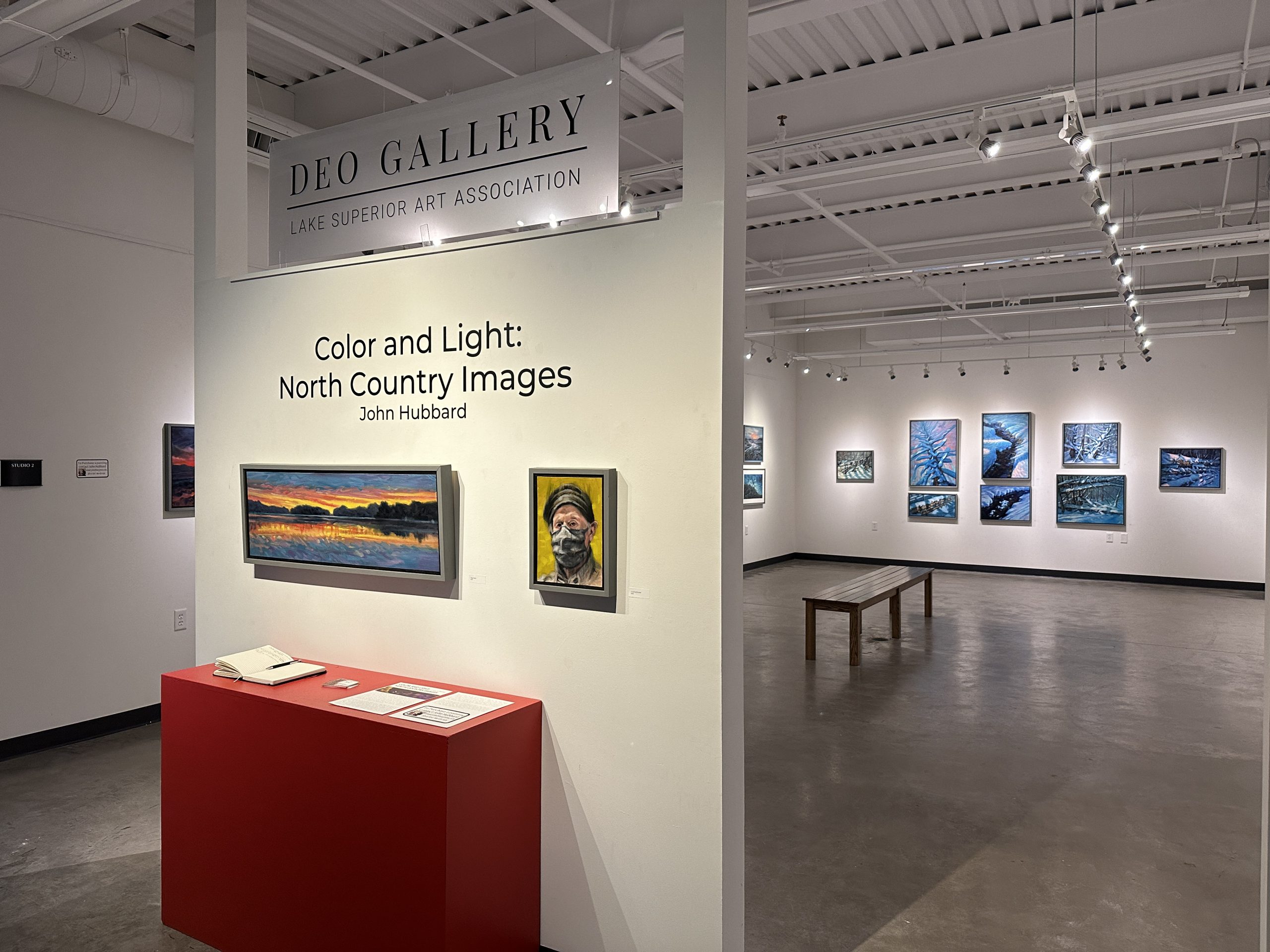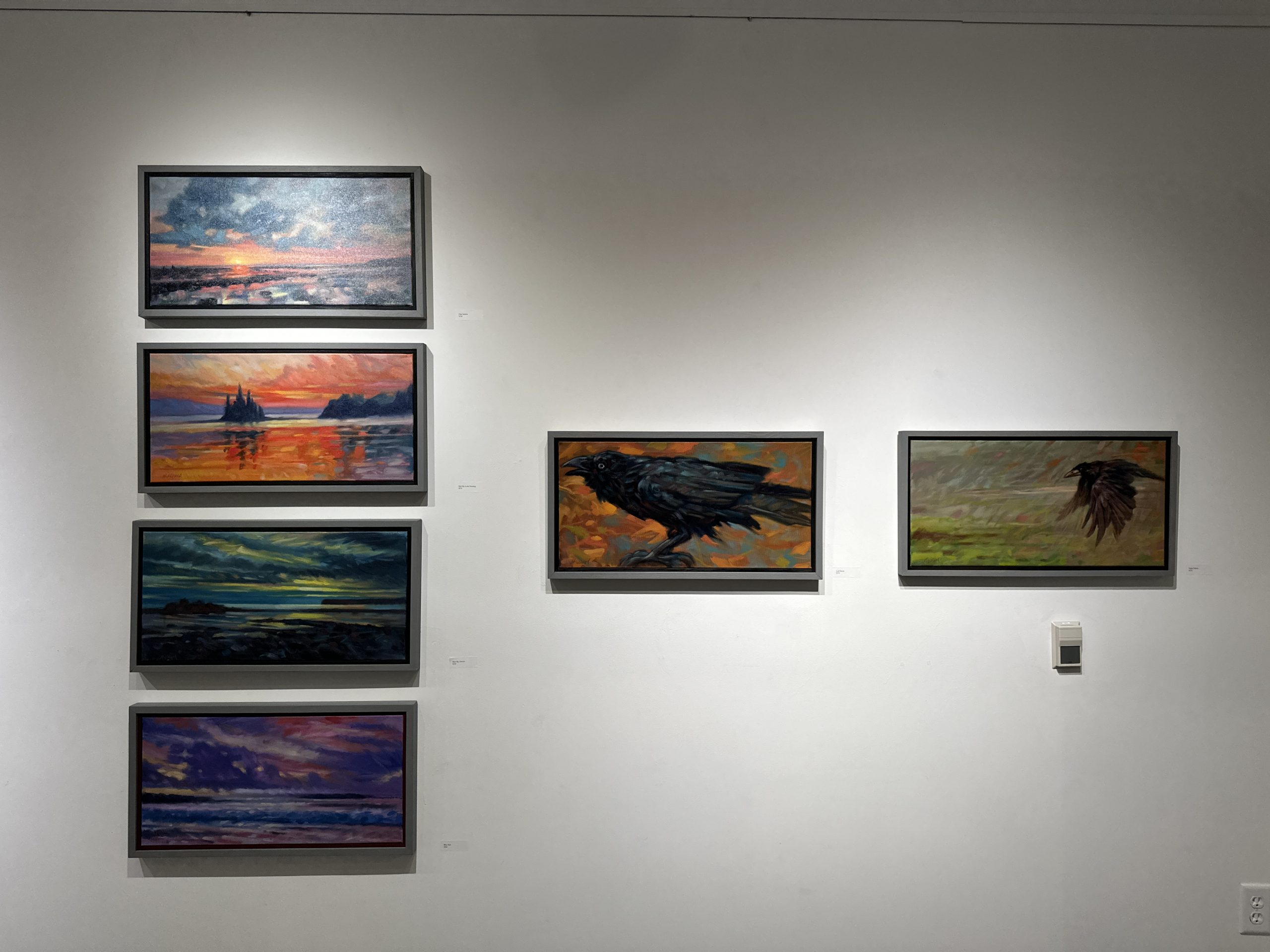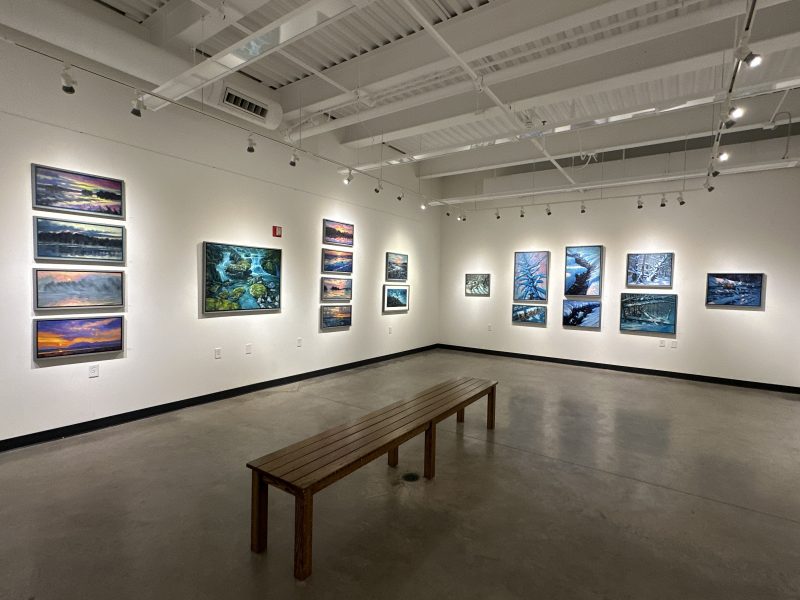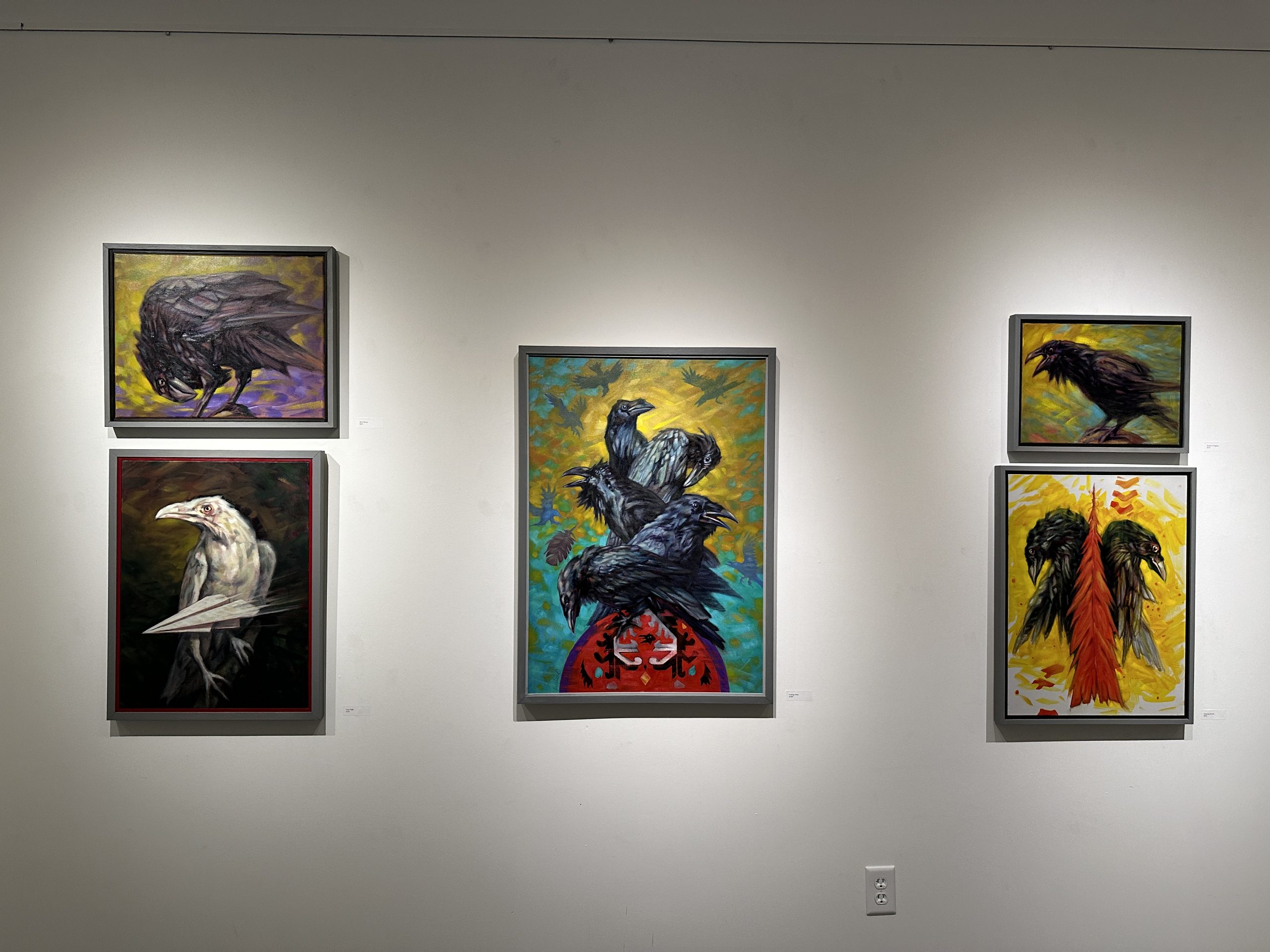Color and Light: North Country Images, an exhibit by artist John Hubbard is on display in the DEO gallery through the months of April and May. The opening reception will occur Thursday, April 11th from 6-8 pm. An artist talk for this gallery will start at 7 pm.
Combining oil and acrylic, these paintings explore how light changes appearances and creates
visual patterns through local landscapes.

John Hubbard, former professor of Art and Design at Northern Michigan University, describes his process: “I may be riding in a car or tramping through the woods on snowshoes, constantly scanning my surroundings for images that might produce an exciting painting. Usually, I go hiking for periods of thirty minutes to three hours and shoot from 30-200 images, which I later review as to which hold painting potential. I crop and adjust the image on my computer and then work from a monitor to create the final painting.”

Hubbard works on one painting at a time and develops it as far as he can in one day. “Often I have 2-3 paintings at that stage, and will over time, continue to further refine it until I have reached the final resolution. Usually, the original reference is soon put aside, so that changes can be made that benefit the final outcome, and are not influenced by the original reference photo.”
“Oil paints are my primary media, but I often begin the work with a ground tone created with acrylics. Acrylics allow for fast drying and are a way of introducing hue as a foil for the image to come. The subjects are predominately based on the local landscape and have been developing for the past twenty-odd years. Initially, the work begins with ideas evolving from direct observation of my surroundings as they are affected by changes of season and environmental factors such as atmospheric conditions and time of day. The one primary concern was always how “light” changes appearances and creates visual patterns.”

“Any subject can be manipulated by altering the light source. Therefore what might be a “boring” image, or one that went unnoticed, changes dramatically when a bright light source is introduced. For this reason, I normally go in search of material only on sunny days. Any object or item in the visual field has the potential for a painting. In addition to the trees and water, I have developed interests in such things as Ravens, machinery and rock formations. Most recently I have returned to the landscape and how it is altered by the changing atmospheric factors.”

“These paintings are my interpretations of what I see. They are not meant to be “photographic “ in their appearance, but t demonstrate an interest in developing a “shorthand” that conveys the essential information before me. That individuality is what distinguishes one artist’s work from another. The way they create marks on a surface, their color choices, what they include or eliminate, and how the image is presented, are all visual text for thought.”